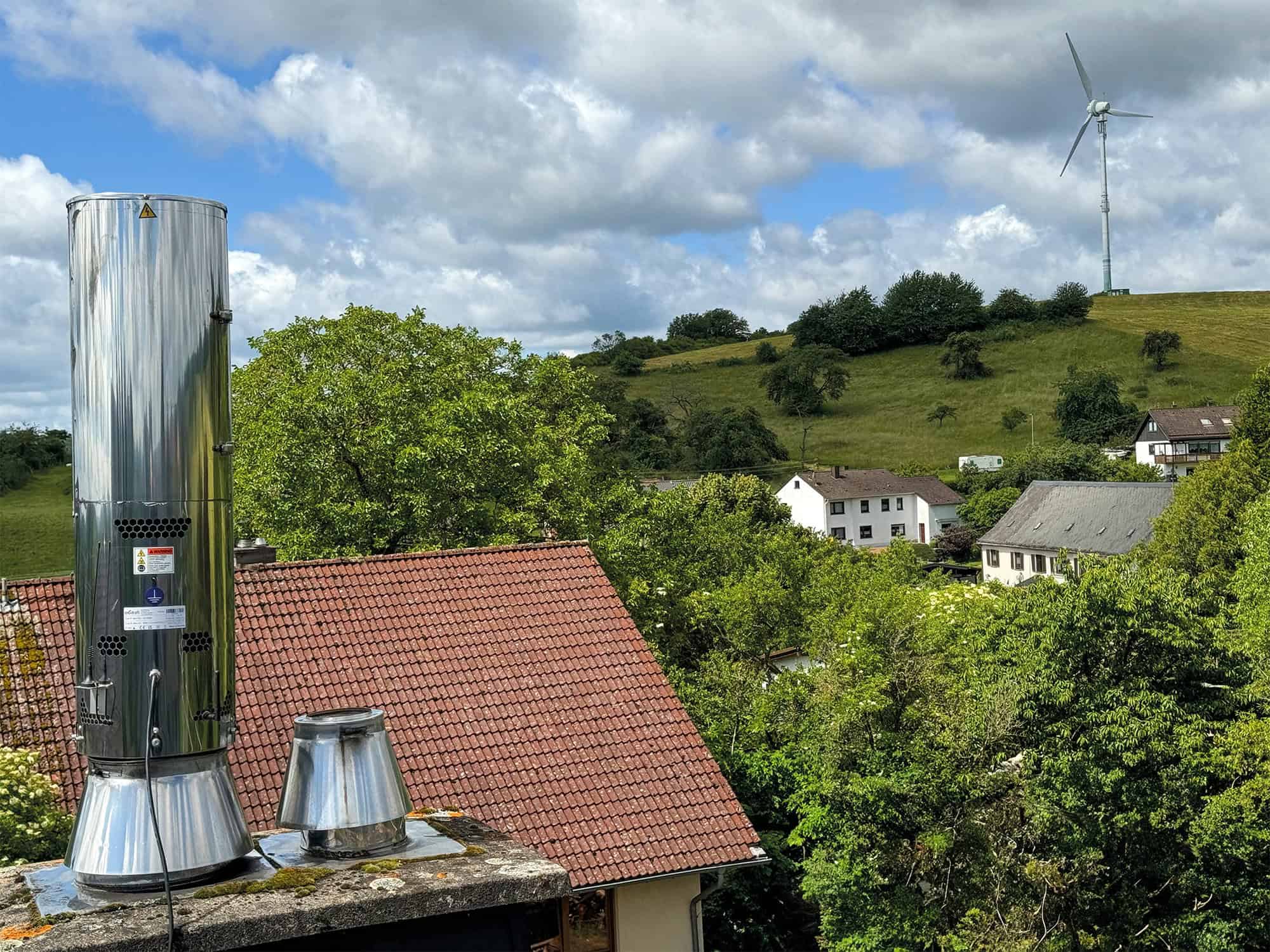
CAREER
Your career.
Optimized.
Join Exodraft and our shared
ambition to build the bridge to a CO₂-neutral
future with greener energy for everyone.
Unlocking the Future: Innovative Energy Sources Transforming Our World
As the global demand for energy continues to surge, driven by population growth and technological advancements, the exploration of innovative energy sources has never been more critical. According to the International Energy Agency (IEA), renewable energy sources are projected to constitute nearly 70% of global power generation by 2050, highlighting a significant shift in how we harness energy. Today, energy sources such as solar, wind, and bioenergy are rapidly evolving, offering sustainable alternatives to fossil fuels. In fact, a report by the International Renewable Energy Agency (IRENA) reveals that renewable energy jobs are expected to exceed 24 million globally by 2030, underscoring the dual benefits of environmental sustainability and economic growth. By unlocking the potential of these innovative energy sources, we can not only mitigate climate change but also pave the way for a resilient and sustainable future.

Emerging Renewable Energy Technologies Shaping Tomorrow's Energy Landscape
The future of energy is being shaped by a wave of innovative renewable technologies, promising to transform our global energy landscape. Breakthroughs in clean energy are occurring at an unprecedented pace, with advancements in energy storage and alternative fuels leading the charge. As countries around the world seek to decarbonize their energy sources in response to rising electricity demand, the focus on sustainability is becoming not just a goal, but a necessity. For instance, research into new battery materials and enhanced energy storage solutions is vital for ensuring a reliable energy supply.

Tips for harnessing these emerging technologies include investing in research and development of renewable energy systems. Collaboration between governments, industries, and research institutions can accelerate the deployment of clean energy solutions. Additionally, fostering a skilled workforce capable of navigating this evolving landscape is crucial. As we witness the ongoing innovative transformations in energy, the integration of artificial intelligence and resilience strategies will further enhance energy security and efficiency.
As we stand on the brink of a significant energy transition, embracing these innovations will allow us to reshape our energy future, paving the way for a sustainable and resilient world. By prioritizing smart investments and embracing the potential of renewable technologies, we can ensure that the energy landscape of tomorrow meets the needs of our increasingly electrified society.
The Role of Energy Storage Solutions in Enhancing Renewable Energy Infrastructure
The role of energy storage solutions is pivotal in enhancing the infrastructure of renewable energy sources. As the world shifts towards more sustainable energy practices, the integration of solar, wind, and other renewable sources often faces challenges related to intermittency. Energy storage technologies, such as lithium-ion batteries and pumped hydro storage, provide a crucial buffer, allowing excess energy generated during peak production times to be stored and utilized during periods of low production. This capability not only ensures a consistent energy supply but also maximizes the efficiency of renewable systems.
Moreover, advanced energy storage solutions are driving innovation in grid management. With increasing penetration of renewables, balancing supply and demand becomes more complex. Smart grids equipped with energy storage can dynamically respond to fluctuations, optimizing energy distribution and enhancing the reliability of the entire system. This integration fosters resilience against outages and enables utilities to incorporate a larger share of renewables, paving the way for a cleaner and more sustainable energy future. As technological advancements continue, the efficiency and affordability of these storage solutions are likely to improve, further revolutionizing energy infrastructure globally.
Innovative Energy Sources in Urban Development: Smart Cities of the Future
As cities continue to evolve, the integration of innovative energy sources is essential to create sustainable urban environments. Smart cities of the future are leveraging technologies such as solar panels, wind turbines, and energy-efficient systems to reduce their carbon footprints and enhance the quality of life for residents. These cities prioritize renewable energy sources, not only to power buildings but also to facilitate clean transportation solutions like electric vehicles and bike-sharing systems.
Tips for maximizing energy efficiency in urban development include investing in smart grids that optimize energy distribution, utilizing green roofs to enhance insulation and reduce energy consumption, and encouraging community engagement in sustainability initiatives. By promoting energy literacy among residents, cities can foster a culture of conservation and innovation.
Another crucial aspect is implementing smart sensors that monitor energy use in real-time, allowing for data-driven decisions that benefit both the environment and the urban population. As cities embrace these transformative energy sources, they become more resilient and better equipped to handle the challenges of urbanization and climate change.
Innovative Energy Sources in Urban Development: Smart Cities of the Future
Exploring Sustainable Bioenergy: Harnessing Organic Materials for Clean Power
The shift towards sustainable bioenergy is critical as we face the dual challenges of climate change and energy demands. By 2024, the global renewable energy market is projected to reach a staggering $1,020.94 billion, with expectations to grow significantly, hitting $1,577.41 billion by 2032. This growth underscores the urgent need for innovative solutions in harnessing organic materials as a clean power source.

A particularly promising sector within this landscape is the biogas upgrading market, which is expected to escalate from $34 million in 2024 to $441 million in 2025, culminating at an impressive $2.29 billion by 2033, boasting a compound annual growth rate of 22.9%. This rapid expansion highlights the increasing recognition of biogas as an effective alternative energy source, capable of converting organic waste into valuable energy while contributing to a circular economy.
Tips: When exploring investments in bioenergy, consider the efficiency of various organic materials and their potential yields. Stay informed about technological advancements in biogas production, which can significantly enhance the energy output and economic viability. Lastly, engage with community programs that support the adoption of renewable energy solutions, as local initiatives can often lead to broader impacts on sustainability.
The Impact of Policy and Regulation on the Adoption of Innovative Energy Solutions
Innovative energy solutions are increasingly being recognized as essential for addressing the global challenge of climate change. However, the adoption of these technologies is heavily influenced by policy and regulatory frameworks. In many regions, including Moldova, the establishment of energy regulatory sandboxes provides a controlled environment where both private and public sectors can experiment with new energy solutions. This approach fosters collaboration and learning, enabling the safe testing of innovative concepts that could redefine energy systems.
Moreover, skill gaps within local governments, as seen in South Africa's renewable energy transition, highlight the need for targeted regulatory support and workforce development. The success of new energy initiatives is often stymied by insufficient training and understanding among key stakeholders. By prioritizing policies that address these gaps and encourage advanced grid technologies, governments can catalyze the widespread adoption of clean energy. As the 2026 Renewable Energy Industry Outlook suggests, a focus on strengthening regulations in response to industry needs will be crucial for sustainable energy progress. Additionally, the exploration of indigenous-led distributed energy systems reveals the complexities of regulatory barriers that must be navigated to achieve broader implementation of innovative solutions.
| Energy Source | Current Adoption Rate (%) | Projected Growth (2025) | Impact of Policy (1-10) | Key Regulation Areas |
|---|---|---|---|---|
| Solar Energy | 20 | 35% | 9 | Incentives, Net Metering |
| Wind Energy | 15 | 30% | 8 | Tax Credits, Land Use Policies |
| Hydrogen | 5 | 25% | 7 | Research Grants, Infrastructure Development |
| Geothermal Energy | 10 | 18% | 6 | Site Permits, Environmental Assessments |
| Biomass | 7 | 20% | 5 | Sustainability Standards, Subsidies |




